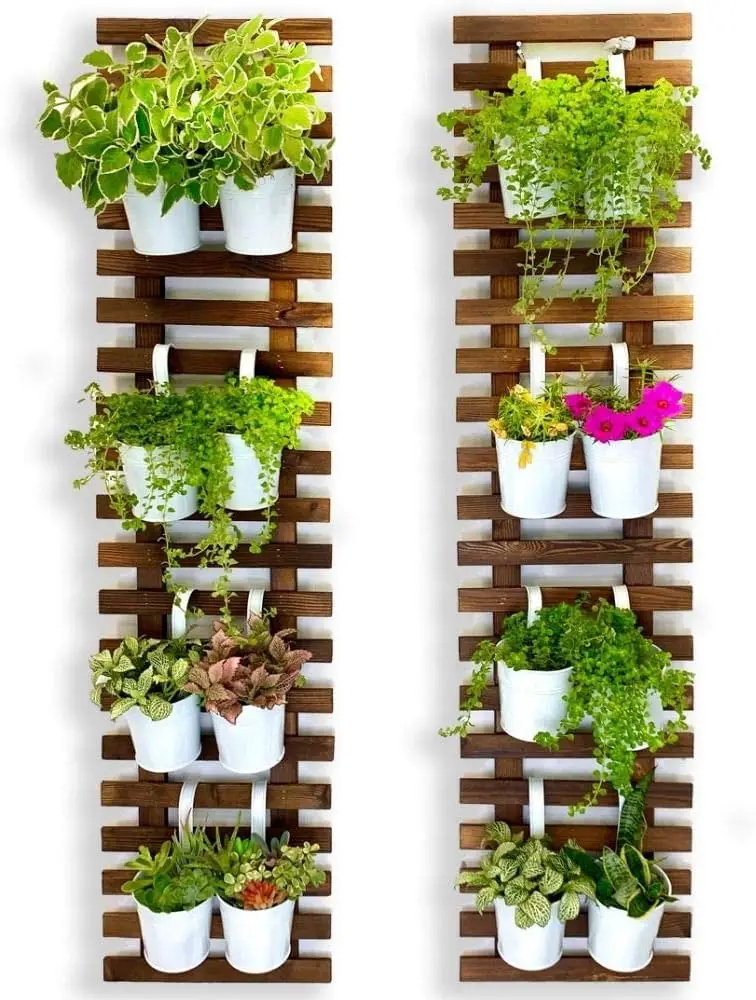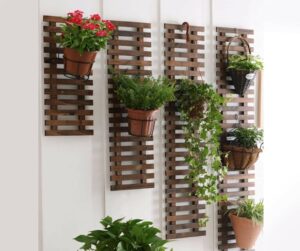Willy Green
August 5, 2023



Vertical Gardening: Reaching New Heights in Green Spaces

Vertical gardening is a captivating and space-saving technique that brings lush greenery to even the most limited of spaces. Whether you have a small urban balcony, a narrow courtyard, or a tiny backyard, vertical gardening allows you to transform walls, fences, and other vertical surfaces into thriving green oases. In this article, we will explore the concept of vertical gardening, its benefits, and provide a step-by-step guide to help you get started on your journey to creating a verdant and visually stunning vertical garden.

The Advantages of Vertical Gardening
Maximizing Space: Vertical gardening is ideal for small spaces where traditional horizontal gardens may not be feasible. It allows you to utilize wall space to grow plants vertically, effectively maximizing your available gardening area.
Enhancing Aesthetics: A well-designed vertical garden adds a touch of natural beauty and visual interest to any setting. It can serve as an eye-catching focal point or a backdrop for other elements in your outdoor space.
Improved Air Quality: Vertical gardens help purify the air by absorbing carbon dioxide and releasing oxygen, contributing to better air quality in urban environments.
Reduced Heat Island Effect: In urban areas, vertical gardens can help reduce the “heat island” effect by providing shade and cooling down buildings and structures.
Easy Access to Plants: Vertical gardens placed at convenient heights allow easy access to plants for watering, harvesting, and maintenance.
Noise and Dust Reduction: The dense foliage of vertical gardens can act as a natural sound barrier, reducing noise pollution. Additionally, the plants can capture and filter dust particles from the air.
Getting Started with Vertical Gardening
Assess Your Space: Evaluate the available space and the amount of sunlight your vertical garden will receive. Choose a wall or vertical surface that receives sufficient sunlight for the types of plants you wish to grow. If you don’t get enough sunlight, you may want to consider adding a grow light. It will make a big difference and your plants will appreciate it!
Select Plants: Choose plants that are well-suited to vertical gardening. Herbs, succulents, ferns, and trailing plants like pothos and ivy are excellent choices. Consider the light conditions and climate of your location when selecting plants.
Choose a Vertical Garden System: There are various vertical gardening systems to choose from, including wall-mounted planters, trellises, hanging planters, and living walls. Select a system that complements your space and design preferences. Here are a few, but there are many different styles to choose from.






Prepare the Wall or Vertical Surface: Ensure the wall is clean, free from debris, and structurally sound. Install a waterproof barrier if needed to protect the wall from excess moisture.
Select the Right Soil and Growing Medium: Use a lightweight and well-draining potting mix for potted plants. For living walls, consider using a specialized growing medium designed for vertical gardening.
Planting and Maintenance: Plant your chosen plants in the vertical garden system, ensuring proper spacing for growth. Water the plants regularly and provide necessary nutrients as needed. Prune and maintain the vertical garden to keep it looking vibrant and healthy.
Consider Irrigation: Depending on your vertical garden’s size and location, consider an irrigation system to ensure plants receive adequate water. Drip irrigation or self-watering planters can be efficient options.
Additional tips
1. Watering Wisely: Vertical gardens can have varying water needs depending on their location and the types of plants you’ve chosen. Monitor the soil moisture regularly with a soil moisture meter and adjust your watering schedule accordingly. Consider installing a drip irrigation system with a timer to provide consistent and efficient watering.
2. Fertilizing for Growth: As plants in vertical gardens may have limited access to soil nutrients, it’s essential to provide them with appropriate fertilization. Use a balanced organic fertilizer or slow-release granules to supply essential nutrients without overwhelming the plants.
3. Pruning and Trimming: Regularly prune and trim your vertical garden to maintain its shape and encourage healthy growth. Remove dead or yellowing leaves and spent flowers to promote new growth and prevent the spread of diseases.
4. Monitor Sun Exposure: Ensure that your vertical garden receives the right amount of sunlight for the selected plants. Too much or too little sunlight can affect their growth and health. If needed, move your vertical garden to a different location to optimize sun exposure.
5. Pest Management: Keep an eye out for pests that may be attracted to your plants. Early detection and prompt action are crucial for preventing pest infestations. Consider using natural pest control methods, such as introducing beneficial insects or making homemade insecticidal soap.
6. Seasonal Plant Selection: Depending on your climate, you may need to change the plants in your vertical garden seasonally. Choose plants that thrive in specific seasons and swap them out accordingly. This way, your vertical garden will continue to flourish year-round.
7. Maintenance Routines: Establish a regular maintenance routine to keep your vertical garden in top condition. Set aside specific days each week for watering, pruning, and general upkeep.
8. Experiment and Adapt: Don’t be afraid to experiment with different plant combinations and arrangements in your vertical garden. As you gain experience, you can adapt your choices to suit your preferences and the needs of your plants.
9. Consider Shelter and Wind Protection: If your vertical garden is exposed to strong winds or harsh weather conditions, consider providing some shelter or windbreak to protect the plants from potential damage.
10. Share Your Success: Share your vertical gardening journey with friends, family, and online gardening communities. Inspire others with your creativity and showcase the beauty and benefits of vertical gardening.
Conclusion
Vertical gardening is a versatile and innovative way to bring the beauty of nature to constrained spaces. Whether you want to add a touch of greenery to your urban balcony or create a stunning living wall as a statement piece, vertical gardening offers endless possibilities. By following the steps outlined in this guide and selecting the right plants and systems, you can embark on your vertical gardening journey and enjoy the rewards of a captivating and space-saving green oasis. Embrace the vertical dimension and let your green space reach new heights of beauty and creativity!
Thank you for reading “Vertical Gardening: Reaching New Heights in Green Spaces.” Here are some other articles you may enjoy reading.









